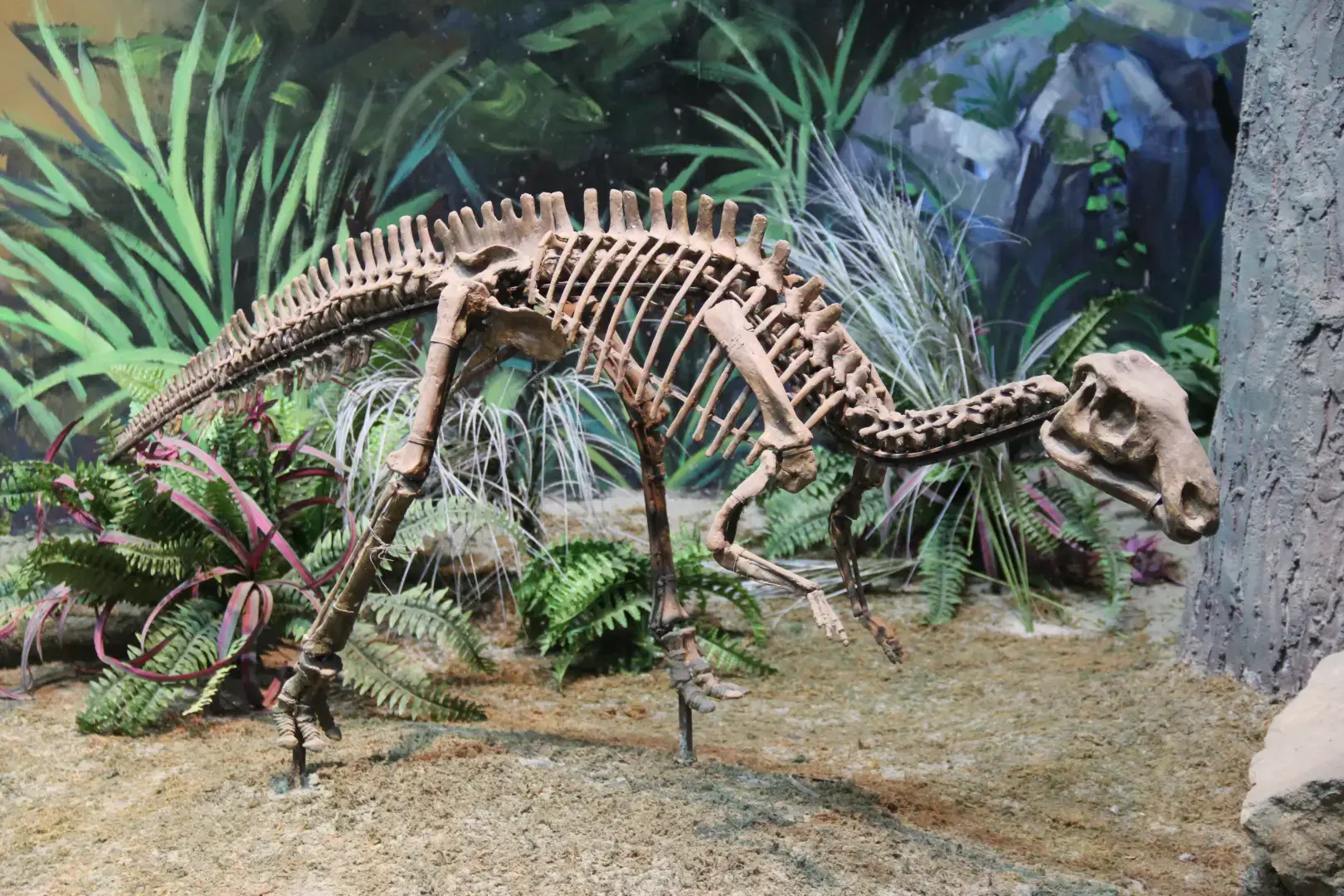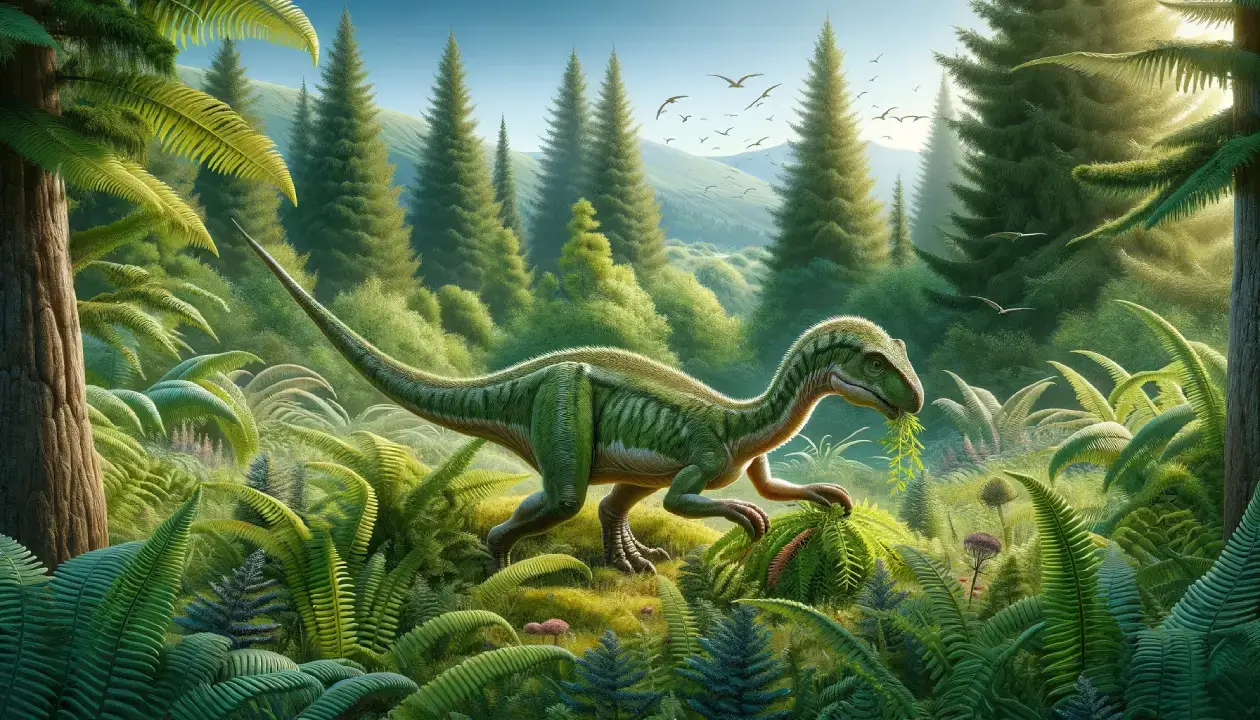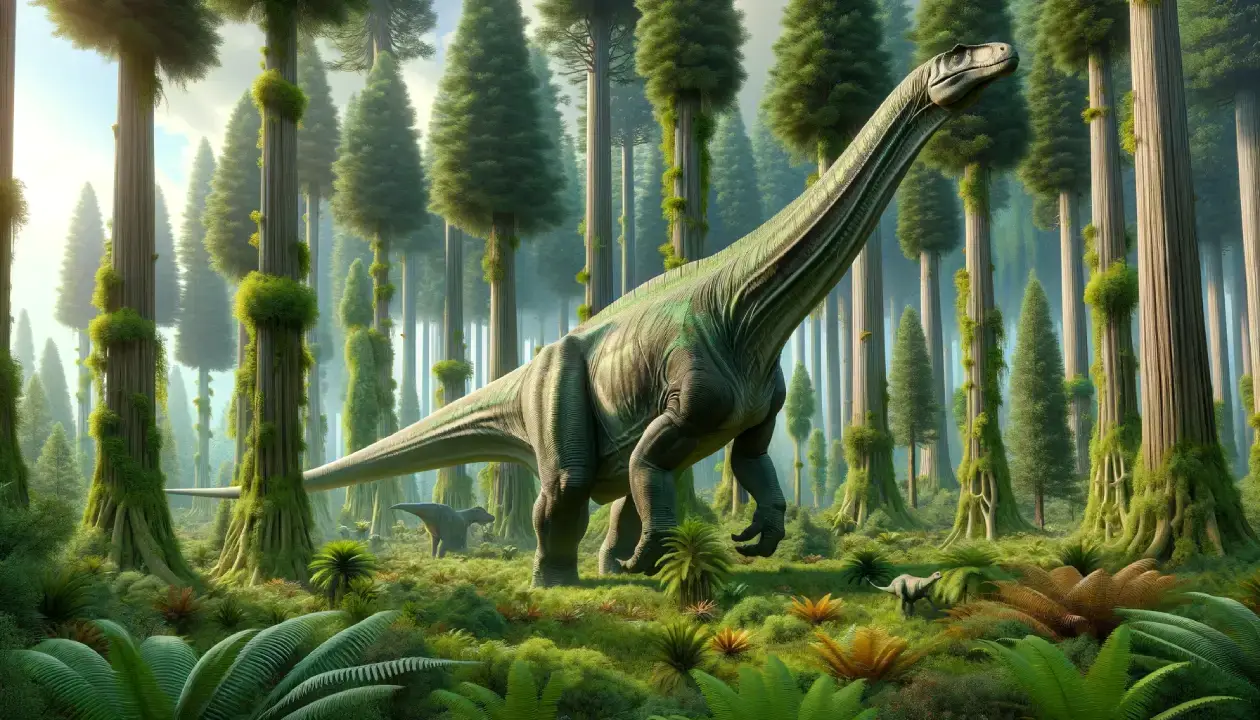Bactrosaurus was a club-spined dinosaur that lived in what is now China and Kazakhstan during the Late Cretaceous period, about 96 to 85 million years ago. It was one of the first dinosaurs to be discovered in the Shishugou Formation, a rich fossil site in Xinjiang. Its name means “club lizard”, after the club-shaped spines projecting from some of its vertebrae. It was a herbivore that fed on low-growing plants and had a thick, scaly skin for protection.
Basic Information
| Feature | Details |
| Time Period | Late Cretaceous (96-85 million years ago) |
| Diet | Herbivore |
| Length | 6-6.5 meters (20-21 feet) |
| Weight | 1.2 metric tons (1.3 short tons) |
| Size | Small |
| Posture | Bipedal |
| Locations | China, Mongolia, Kazakhstan |
| Continent | Asia |
| Type | Ornithopods |
| Habitats | Grasslands, Floodplains |
Description of Bactrosaurus
Historical Context
Bactrosaurus was the first dinosaur to be discovered and named in the 20th century, in 1933 by Charles W. Gilmore. It was found on a farm near the Iren Dabasu Formation of Inner Mongolia, China, by a Soviet-Chinese expedition in 1959 and 1960. The fossils consisted of partial skeletons of six individuals, ranging from hatchlings to adults. Additional specimens include skull fragments and postcranial bones from China, Mongolia, and Kazakhstan. Bactrosaurus was one of the earliest members of the Hadrosauromorpha, a group of beaked dinosaurs that had hoof-like feet. It may have been related to other hadrosauromorphs from South America and Asia.
Physical Attributes
Bactrosaurus was a small herbivorous dinosaur that belonged to the group of ornithopods, which were characterized by their beaked mouths and hoof-like feet. Bactrosaurus had a long neck and a long tail, and a very robust body. Its head was large and broad, with a long snout and a wide muzzle. Its teeth were peg-like and adapted for eating vegetation. Its legs were stout, and its feet had five toes, each tipped with a large claw. Its most distinctive feature was its size, which was estimated to be 6-6.5 meters (20-21 feet) long and 1.2 metric tons (1.3 short tons) in weight. It was one of the largest land animals of its time.
Feeding Habits
Bactrosaurus was a herbivore that fed on low-growing plants such as ferns, cycads, and horsetails. It had a broad muzzle that allowed it to take large bites of vegetation. It did not have complex teeth for chewing, so it swallowed its food whole or with minimal processing. It had a large gut that could digest tough plant matter with the help of symbiotic bacteria. Bactrosaurus may have used its long neck to browse on different levels of the forest canopy, avoiding competition with other herbivores.
Unique Features
Bactrosaurus had several unique features that distinguished it from other ornithopods and dinosaurs. One of them was its size, which was larger than most other hadrosauromorphs. It reached a length of 6-6.5 meters (20-21 feet) and a weight of 1.2 metric tons (1.3 short tons). Another unique feature was its posture, which was more horizontal than vertical. Bactrosaurus held its neck and tail parallel to the ground, rather than arching them upward or downward. This posture may have helped Bactrosaurus balance its massive body and reduce stress on its bones and muscles.
Movement and Speed
Bactrosaurus was not a fast or agile dinosaur. It walked on two legs and had a low center of gravity, which made it stable but also limited its mobility. It could not turn quickly or run for long distances. Its top speed has been estimated to be around 15 km/h (9 mph), similar to a human jogging pace. However, it could make sudden movements when necessary, such as raising its head or swinging its tail.
Cultural Impact
Bactrosaurus has been featured in some books, movies, games, and toys as a popular dinosaur. It is often portrayed as a gentle or friendly creature or as a loyal companion for human characters. Some examples of its appearances in popular culture are Dinosaur King (2007-2009), an anime series where it is one of the main characters’ dinosaurs , Jurassic World Evolution (2018), a video game where it is one of the unlockable dinosaurs, and Jurassic World: Epic Evolution (2024), a toy line where it is one of the featured dinosaurs.
Interesting Facts
- Bactrosaurus was the first dinosaur to be discovered and named in the 20th century, in 1933.
- Bactrosaurus lived about 96-85 million years ago, during the late Cretaceous period, and are now known from fossils in the Iren Dabasu Formation of Inner Mongolia, China, the Zouyun Formation of China, the Dabrazhin Formation of Kazakhstan, and the Baynshire Formation of Mongolia.
- Bactrosaurus was one of the earliest members of the Hadrosauromorpha, a group of beaked dinosaurs that had hoof-like feet.
- Bactrosaurus had a robust body that was heavier than most other ornithopods. Its body mass has been estimated to be 1.2 metric tons (1.3 short tons), which is equivalent to a large rhinoceros or a small elephant.
- Bactrosaurus had evidence of tumors, including hemangiomas, desmoplastic fibroma, metastatic cancer, and osteoblastoma, in its vertebrae. This suggests that dinosaurs were susceptible to diseases similar to those of modern animals and humans.
Related Dinosaurs
- Probactrosaurus: A close relative of Bactrosaurus that had a similar size and posture and lived in China and Kazakhstan.
- Lambeosaurus: Another close relative of Bactrosaurus that had a larger size and a crest on its head and lived in North America.
- Equijubus: A more distant relative of Bactrosaurus that had a smaller size and a longer tail and lived in China.







